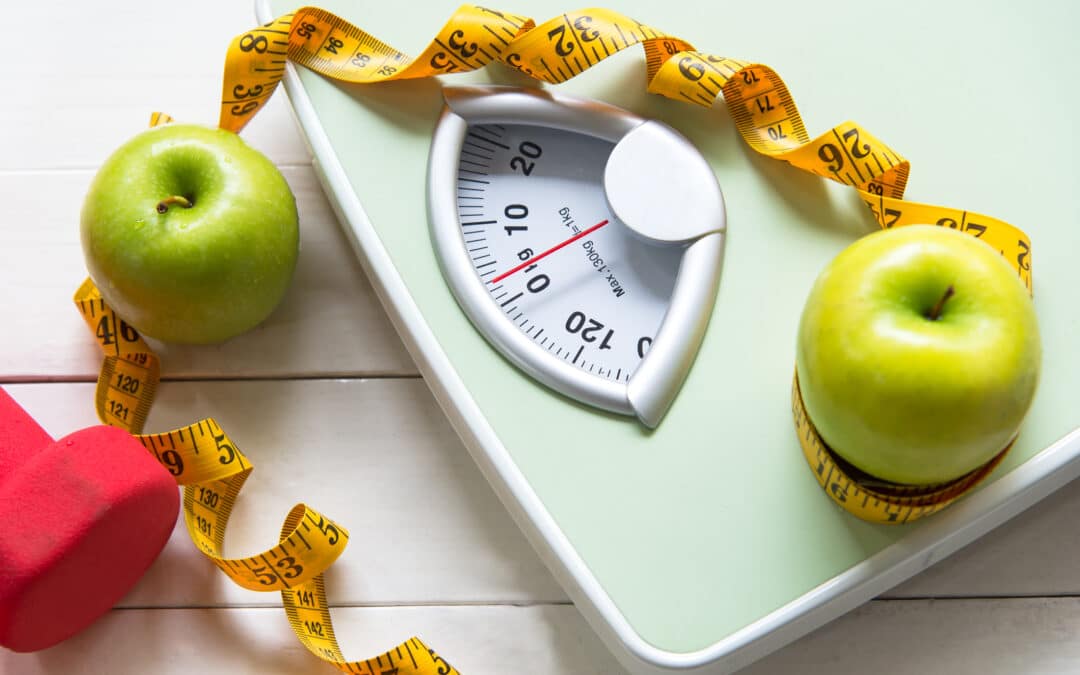If you want permanent fat loss, Sanoviv recommends avoiding trendy diets. Instead, try some simple tips to help you identify eating and lifestyle habits that you can adopt. Here are 40 ideas to lead you to a healthier and leaner body. Consider choosing 4 or 5 of the ideas that resonate with you most and implement them for 60 days. After, you can select a few other ideas to see what works best with your lifestyle. This is a great way to become more aware of daily habits affecting your body’s ability to metabolize fat efficiently.
1. Eat a breakfast daily containing adequate protein.
This helps turn on metabolism and stabilize blood sugar reactions (and cravings) later in the day.
2. Finish eating three hours before bedtime.
This starts a prime fat-burning time (9-12 hours after dinner).
3. Get a good night’s sleep.
Sleep is a prime fat-burning time. If you’re not sleeping well, fat loss may be compromised.
4. Support your liver for efficient fat loss.
The liver is essential for metabolic balance, energy, hormone production, digestion, and detoxification. Reducing processed foods and environmental toxins can provide a good start.
5. Eliminate artificial sweeteners.
These zero-calorie sweeteners fuel weight gain via the actions of insulin.
6. Food sensitivities.
Eliminate the common food allergens for a few months: wheat/gluten, dairy, and corn.
7. Have soup for dinner for seven days.
Make it a nutritious choice (homemade if possible). Then, wake up to a healthy, high-protein breakfast.
8. Consume fermented foods to balance gut bacteria.
Specific gut bacterial imbalances can promote obesity. Fermented foods include sauerkraut, yogurt, Kombucha, pickles, miso, and others.
9. Keep a bowl of fruit at work.
This works well for a sweet, nutritious, high-fiber treat rather than having a candy bowl.
10. Monitor portions.
Eating smaller portions of the food you regularly eat is very effective for steady weight loss.
11. Eat enough fiber.
Fiber helps keep you full and is beneficial for healthy digestion. Strive for 25-30 grams per day.
12. Manage stress.
Chronic stress can prevent weight loss and promote weight gain, especially around your middle. Start with a few minutes of deep breathing daily.
13. Slow down and eat mindfully.
Unconscious eating leads to overeating since it takes 20 minutes for your brain to receive the message that your stomach is full.
14. Toxicity can impair fat loss.
When dealing with excess toxins, your body activates backup strategies for coping with the overload, including increasing the number of fat cells and stuffing them with toxins and fat. To eliminate toxins, sweat daily, drink plenty of water, increase fiber, and have 1-2 bowel movements daily.
15. Avoid too much sitting.
Sitting stops the circulation of lipase, the enzyme that breaks down fat in our bodies. Standing will re-engage our fat-burning enzymes. Stand while talking on the phone, watching television, or waiting.
16. Go grain-free for two weeks.
That means no pasta, bread, bagels, muffins, donuts, crackers, or chips. Try lettuce wraps for sandwiches, smoothies for breakfast, and extra veggies (instead of rice or potatoes) with meals. After 2 weeks, try a limited approach to grains to maintain weight loss.
17. Try intermittent fasting.
Restrict your eating window to eight to 10 hours, allowing for a 14 to 16-hour fast. This can be done by skipping dinner a few days a week, skipping breakfast, or adjusting your meals to eat a later breakfast and earlier dinner. See which method works best for you.
18. Strive for quality (a calorie is not a calorie).
For example, 100 calories of potato chips and 100 calories of raw almonds will have different biochemical effects on the body. For long-term weight management, always put quality first, especially if you count calories.
19. Add a liquid day twice a week.
A liquid day includes smoothies, soups, teas, green juices, and water. This helps give the body a digestive rest, cleanses your system, and helps to restore balance.
20. Choose a smaller plate for your meals to help control portions.
Large plates can make a serving of food appear smaller, and smaller plates can lead us to misjudge the same quantity of food as being more prominent.
21. Adjust meal timing to improve your body’s ability to burn fat.
This is different than intermittent fasting (#17). Try spacing your meals 5-6 hours apart rather than skipping meals. If your schedule is such that the next meal is only four hours away, eat smaller than the prior meal to create a smaller rise in insulin, which preserves the rhythm of burning fat.
22. Avoid alcohol for 30 days.
Besides making your liver work harder, alcohol can negatively affect food choices and cause overeating of the wrong foods. Alcohol also turns off fat metabolism.
23. Fill up on nutrient-dense veggies.
This will increase both fiber and water and may help to decrease cravings.
24. Use vitamin C to reduce cravings.
This may also help determine if your cravings are caused by food sensitivities, especially if the craving diminishes after taking vitamin C. Research from Linus Pauling shows that vitamin C competes with sugar to enter your white blood cells. Too much sugar in your system means there is less vitamin C that can enter your cells. This may be the mechanism for how vitamin C helps with cravings. One study showed that adults deficient in vitamin C may be somewhat resistant to losing fat. Conversely, people with adequate vitamin C levels burned 30 percent more fat through exercise than those with low vitamin C.
25. Do not eat large meals.
Larger meals cause excess insulin secretion. This may lead to low blood sugar three to four hours later.
26. Short bursts of activity may be better for weight loss than long cardio sessions.
Three ten-minute bouts of activity work well and may fit better into your day.
27. Avoid daily weigh-ins.
Instead, choose to weigh yourself once a week, with the same scale, under the same conditions, and on the same day of the week. The body’s day-to-day weight fluctuations may be discouraging for many people.
28. Eat only at the dinner table.
This promotes mindful eating and supports good eating posture.
29. Recognize stress (belly) fat and its three big offenders: alcohol, caffeine, and sugar.
30. One day a week, try a veggies-only diet.
Start with a green smoothie for breakfast, a large salad for lunch, and a plate of stir-fry veggies for dinner. No grains, no fruit, no meat.
31. Reduce excess processed sodium.
While unrefined sea salt is a healthy food choice, the sodium in processed food products can increase water retention and impair weight loss efforts.
32. For one week, replace one meal daily with green vegetable juice.
This is a great way to boost antioxidants and phytonutrients in your diet without added calories. It also provides a liver cleanse.
33. Keep a food log for one week.
This is a great awareness exercise and keeps you honest with your food choices.
34. Start your day with a workout.
Even a short activity session is beneficial since morning is a prime fat-burning time.
35. Drink cucumber-ginger water all day for 3 days.
Eat your regular meals, but make this your only beverage.
36. Drink more water.
Start with 8 ounces when you wake up and the total daily intake should add up to about half of your ideal body weight (in ounces). If you weigh 150 lbs., you should strive for 75 ounces daily.
37. Keep added sugar to less than 20 grams daily, not counting fresh, whole fruits.
38. Avoid gassy foods for 4 days.
Such foods include broccoli, cauliflower, Brussels sprouts, cabbage, onions, beans, lentils, artificial sweeteners (xylitol in chewing gum), wheat, and milk products.
39. Reduce starchy carbohydrates after 2:00 p.m.
Some research shows that eating starches later in the day promotes cravings in the evening and helps with fat loss.
40. Strive for 8,000 – 10,000 steps per day.
Just maintaining an active daily life can significantly affect your weight loss efforts. Use a regular pedometer and create a challenge with your friends or family members.

